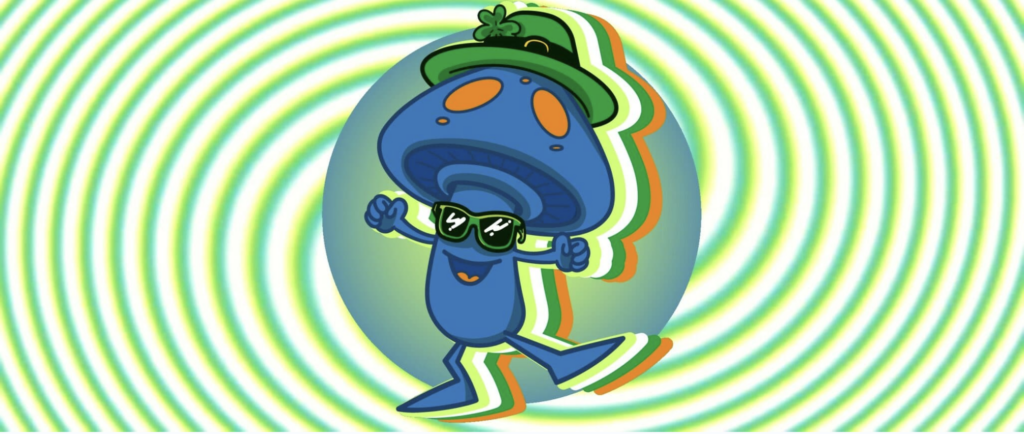St Patrick’s Day is named after the patron saint of Ireland, and is celebrated every year on the 17th of March. Most famous for having introduced Christianity to the Emerald Isle, he is also said to have driven all the snakes from the country too. There’s a popular theory that the serpent was actually a metaphor for the early Pagan faiths of Ireland!.
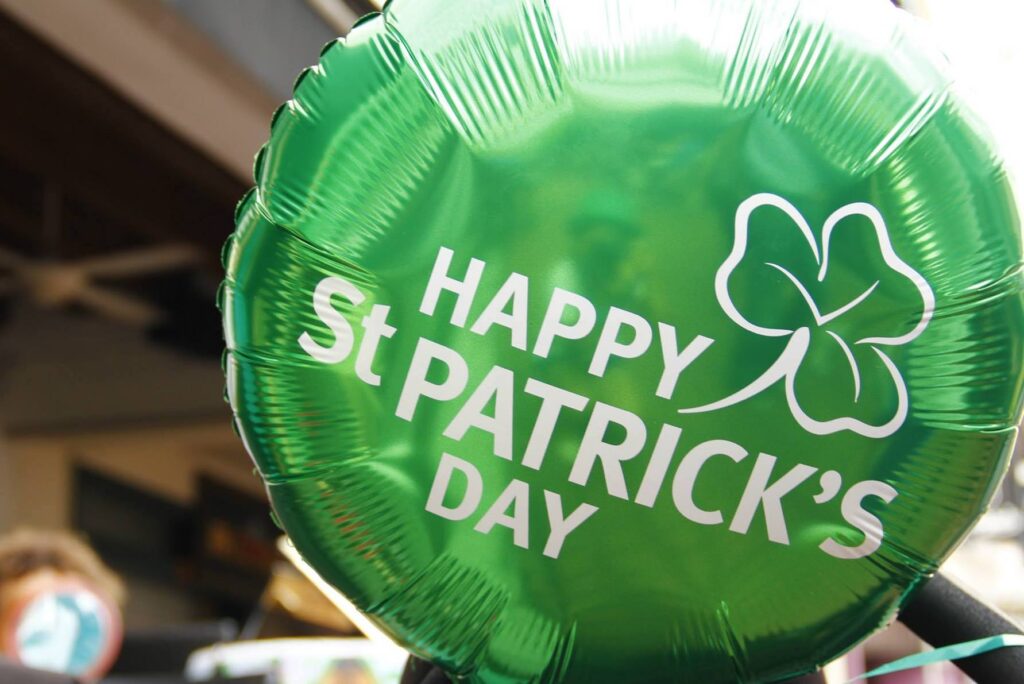
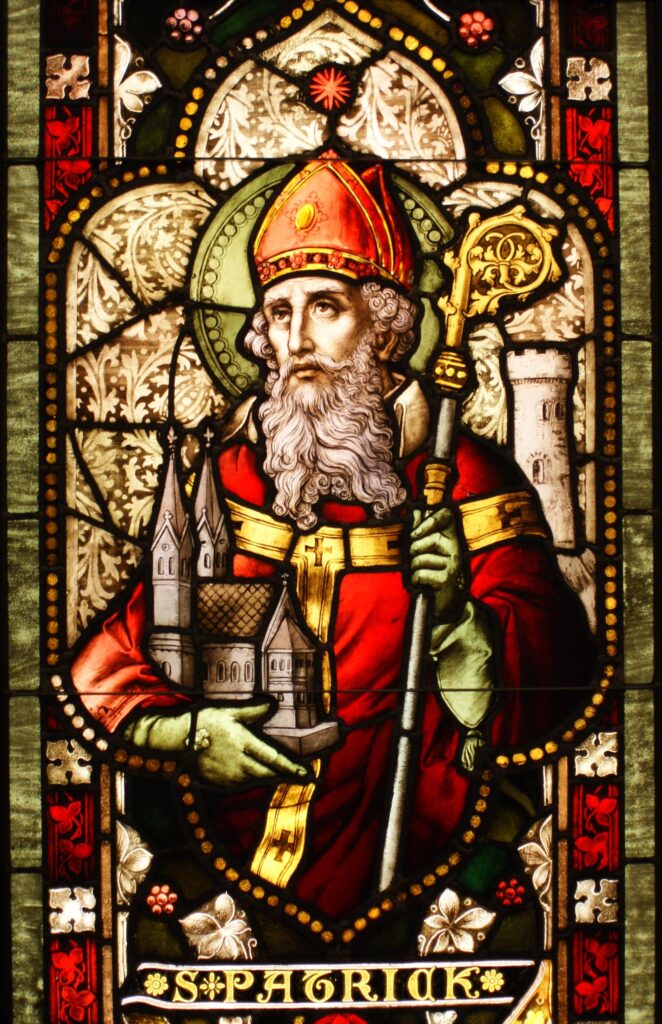
There is evidence of St. Patrick’s Day being celebrated as a feast day in Ireland as far back as the 7th century.
Small Country, Big Party
Despite being such a relatively small country, the Irish diaspora is spread across the world — most notably in the United States, where the biggest and most extravagant celebrations tend to be held. In fact, compared to the green-river dying antics of cities such as Chicago, the actual St. Paddy’s celebrations in Ireland are relatively sedate.
A Land of Mysticism and Magic
But why do people find St. Patrick Day hijinks so thrilling? Well, it’s of course in part due to the greenlight to get absolutely out-of-your-box on whiskey and beer. But there are other reasons why Ireland captures the imagination of those across the world. Famed for its mysticism, fairy stories, and magic, many imagine it as a sort of mythical land itself. And although actual Irish people might roll their eyes at tourists on the hunt for Leprechauns, they won’t deny that Ireland is a land of epic legends, myths and fairytales.
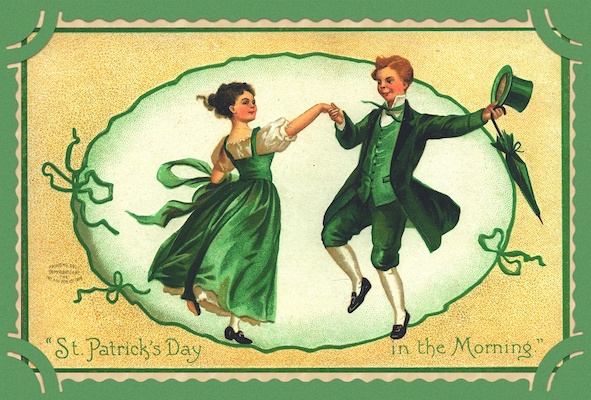
Trippy Tales for a Psychedelic Paddy’s Day
These fairytales, when coupled with a Celtic history full of mysterious trippy rituals — which may or may not have included druidic magic mushroom ceremonies — is tantalizing for the psychedelic imagination. The psychic explorers among us may well choose to celebrate Paddy’s Day with a shroom trip and its customary afterglow, rather than deal with a nightmare of a whiskey-hangover on the 18th. And, getting stuck into some classic Irish mythology can greatly enhance your trip — get that imagination warmed up. So today we’re going to explore 5 trippy Irish myths and legends. Say hi to the fairies for us!
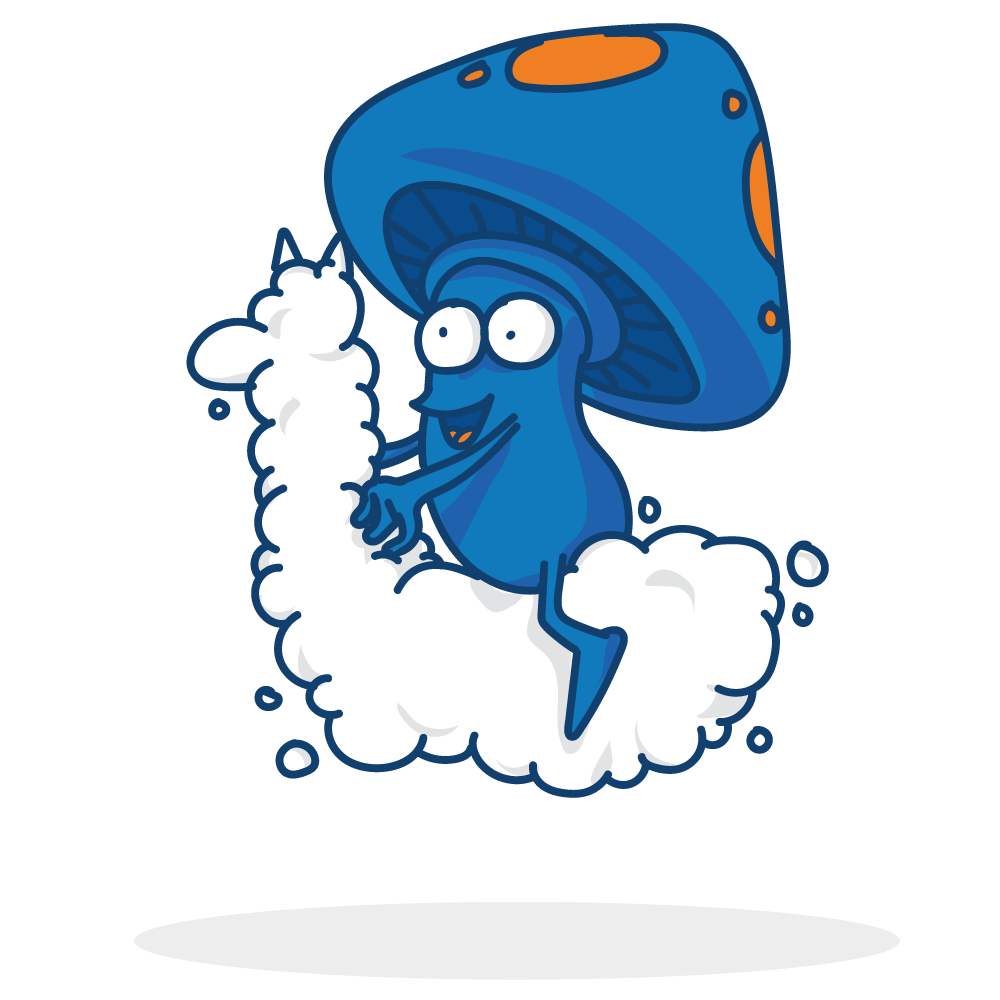
Tír na nÓg
Tír na nÓg is one of the most famous myths of Ireland. It is the name for the Celtic Otherworld. Not the afterlife you understand, it is an earthly paradise, but one that can only be reached through magic. A bit like that special place you visit in your mind when you’ve taken some ahem magic (mushrooms!)
The tale Tír na nÓg is best known for however, is that of Oisín and Niamh. Oisín was a great warrior and poet. One day, while out hunting, Oisín saw a white horse approaching him, and on the horse’s back was the most beautiful woman he had ever seen. The woman was Niamh, and she had come to earth to make Oisín her husband. Oisín fell instantly in love, and agreed to come and live with her in Tír na nÓg. Oisín lived happily in Tír na nÓg — it is fairyland after all — but after around 3 years he sorely missed his father, and his people, and longed to see them again.
Niamh agreed to let him ride her magical white horse back to earth to visit his family. However, she pleaded with him not to get off the horse at any point during his trip, and to make sure his feet did not touch the ground.

Oisín Returns From Fairy Land
On arrival back to Ireland, Oisín did not recognize anyone and much had changed. He saw some men who were struggling to move a rock, and asked where he could find his family. The men replied that his family were no more — in fact no one even told stories of their legendary battles; it had been so long. Oisín realized that time acted differently in the fairy kingdom he had been living blissfully in — it had been three hundred years — not three! At a loss, he reached down to help the men with their rock, remaining on the horse in accordance with Niamh’s words. But! Oisín lost his balance and tumbled from the horse’s back. As soon as he touched the earth he had missed so much, Oisín aged 300 years, becoming a frail old man. The horse galloped quickly back to Tír Na nÓg, and Oisín died soon after.
(Ppssst! If you like trippy time-bending tales, check out our article on how psychedelics can change your perception of time! — But don’t worry, you won’t end up like Oisín!)
The Children of Lir
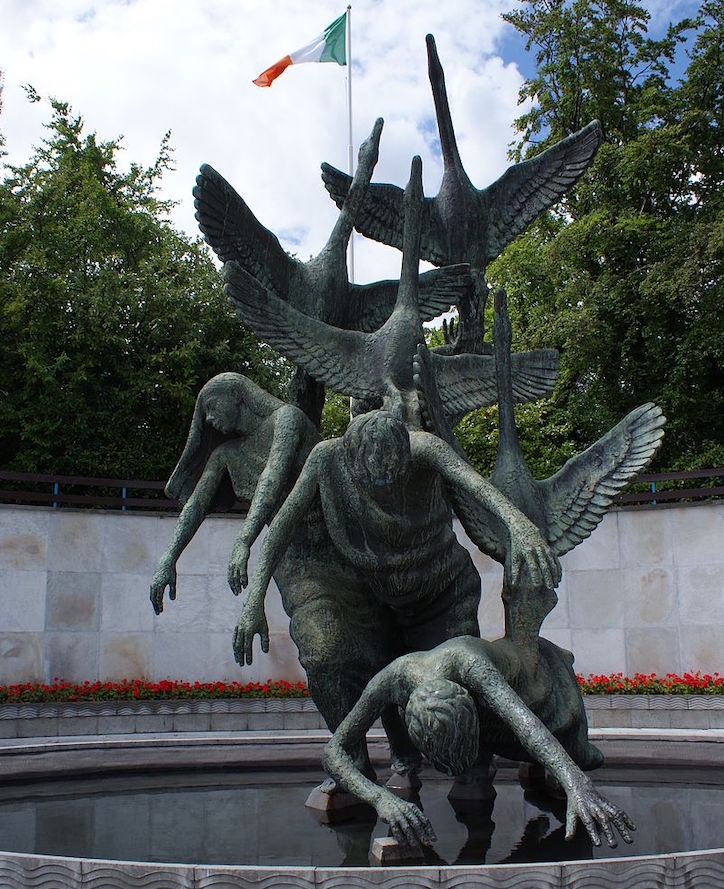
designed by Oisín Kelly and situated
in the Garden of Remembrance (Dublin)
The Children of Lir is one of the best known tales of Ireland. It also follows the Tír Na nÓg trend of freaky-deaky speed aging. 🤷
The story is of a man called Lir and his four children Aodh, Fionnghuala, Fiachra and Conn. Their mother had died and he remarried a woman called Aoife. At first she took them in as her own, but soon became jealous of sharing the attention of Lir with them. So one day she transformed the four children into four white swans and banished them to live on a lake (as you do.) However, they still had human voices.
After 900 years in icy lakes and seas the children were released from under the spell by the ringing bells of the new Christian church and St. Patrick. They transformed into the frail old men and women they really were, and were baptized just before they passed away, to peace at last. This story, though melancholic, can be seen as an allegory for trusting despite being hurt, and looking for light at the end of the tunnel.
Legends of The Selkies
Selkies, mythological seal people, are peppered throughout Irish, Scottish, Scandinavian and Icelandic mythologies. Like mermaids, they are said to crave living on the land. They can transform from Selkie to human by shedding their seal skin, and back again, by putting it back on. One Selkie legend goes that a fisherman named Neil Mad Coddrum spotted some women dancing naked on the beach by the light of the moon. On spotting him they grabbed their seal skin furs and dove into the sea. However, Neil was able to grab one of the sister’s seal skins before she could. He hid her seal skin, and so, she was forced to become his wife.
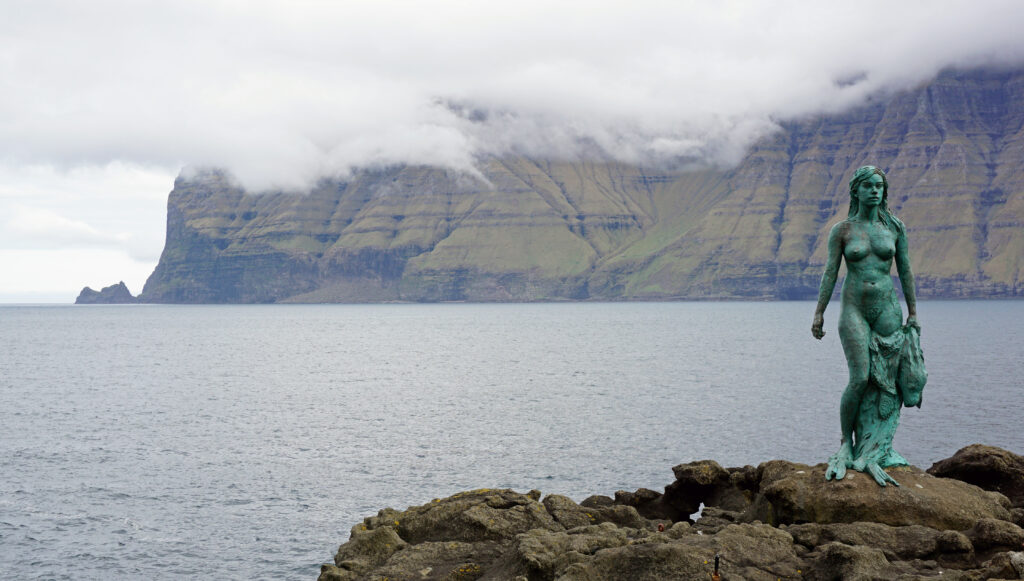
Eventually she gave birth to a son and daughter, both with webbed fingers and toes. One day, having been exploring, the children found a cloak of fur and brought it to their mother. Overjoyed to have her seal skin back, she explained to the children she would soon leave them, but they would still be able to hear her song at night, as they themselves were half-Selkie. When Neil was asleep, she slipped away into the night and back to her underwater home.
The Giant’s Causeway
The Giant’s Causeway is a real landmark in Ireland. It is located in County Antrim of the north coast of Northern Ireland and is an area of about 40,000 interlocking basalt rock columns.
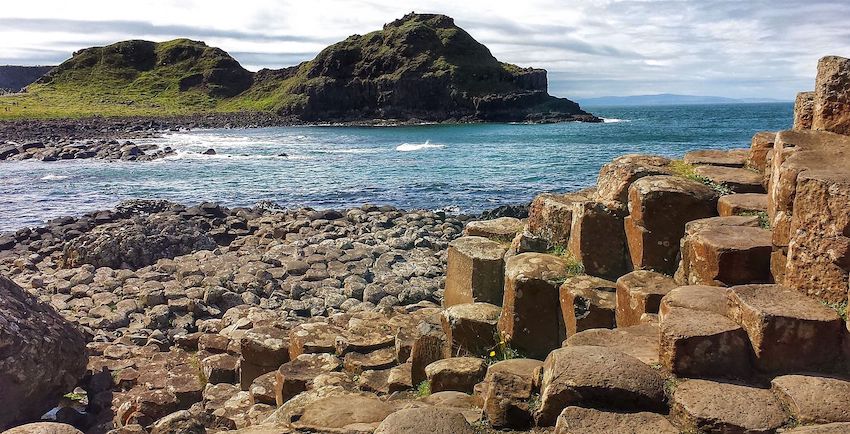
According to legend the columns were actually put there by a giant. The tale goes that the Irish giant Fionn mac Cumhaill (Finn MacCool) was challenged to a fight by the Scottish giant Benandonner. Fionn accepted the challenge so built the causeway of giant rocks so he could reach Benandonner up in Scotland. However, when he clocked Benandonner he realized the Scot was a much giant-er giant than he was. So, Fionn’s wife Sadhbg quickly disguised Fionn as a baby (don’t worry she’s not crazy — she’s a lady with a plan!)
When Benandonner saw this huge baby he was immediately struck by how large its father must surely be. He fled back to Scotland, across the causeway, destroying it as he went so Fionn could not follow him. The remains are what makes up the Giant’s Causeway today.
The Salmon of Knowledge
The Salmon of Knowledge is one of the best loved Irish legends. There are many different versions floating around, but this one can be your introduction. When the above-mentioned Fionn mac Cumhaill (he’s a fixture in Irish mythology btw — specifically what is known as the Fenian Cycle) was a young boy, he was apprenticed to the old poet Finnegas.
One day, when down by the river, Finnegas told Fionn about a legendary salmon who had eaten magical hazelnuts that had fallen into the water from a tree. These nuts had given the salmon the wisdom of the world. The first person to eat the salmon, Finnegas explained, would gain this knowledge themselves. One day, they managed to catch the elusive salmon. Finnegas tasked Fionn with cooking the fish, but warned him not to eat a single bite.

While turning the fish over the fire, the fat splattered onto Fionn’s thumb, burning him. He instinctively stuck his thumb into his mouth. As he did so he felt the warmth of all the world’s wisdom spread through him. Although Finnegas was furious, nothing could be done. Fionn became the wisest man in Ireland and the subject of many myths and legends.
Psychedelic note: There are some people who interpret the magic hazelnuts or even the symbolism of Fionn’s thumb to actually be code for magic mushrooms. There are in fact a lot of crossovers in the ancient Irish words for ‘mushroom’ and ‘nut’. Additionally, the ‘knowledge’ that Fionn gains can be read as the realizations and perspective changes one experiences after a psychedelic trip!
Find Your Own Fairy Land…
We hope that these magic myths have fired up your imagination for your next magic mushroom trip. And wherever you are, Happy St. Patrick’s Day!
